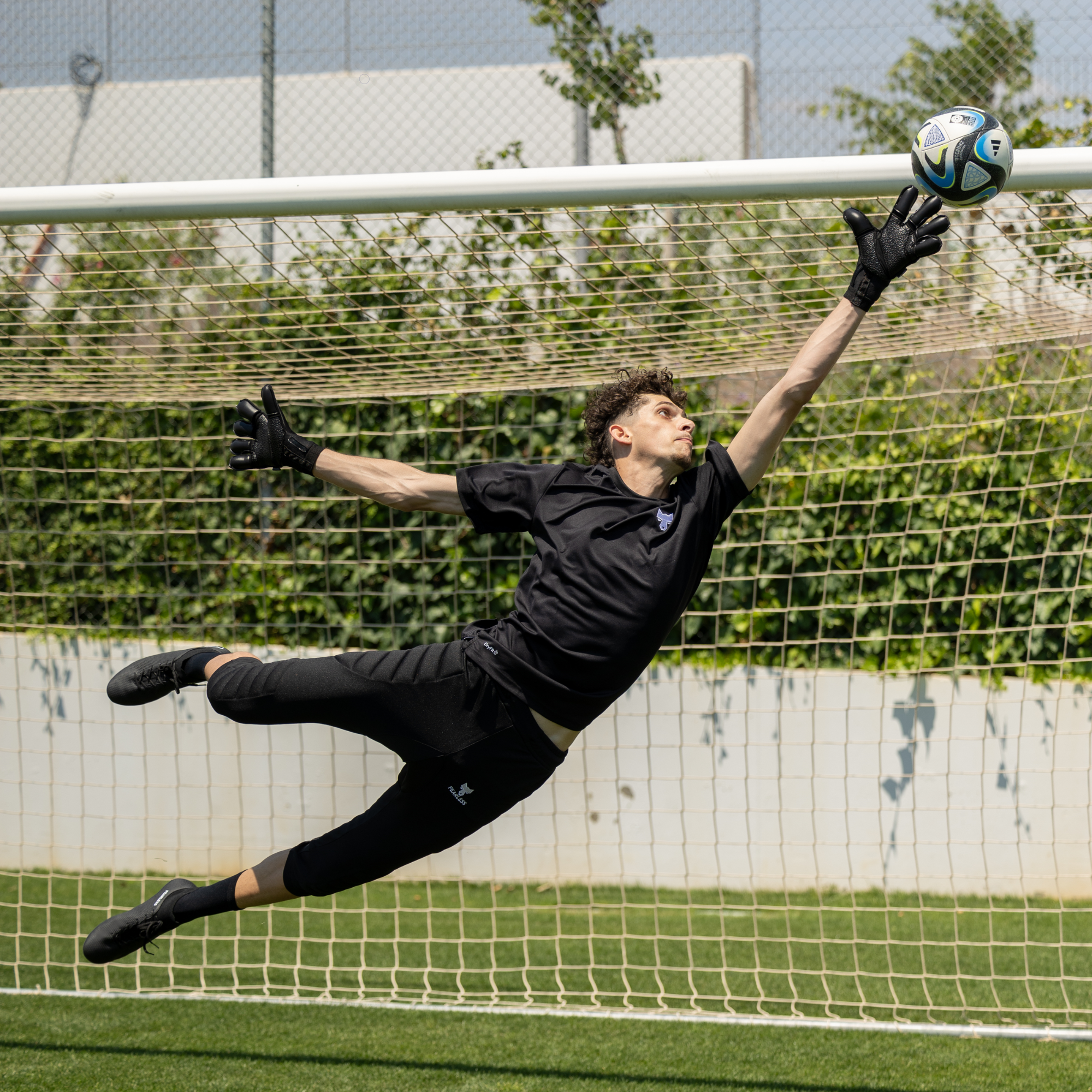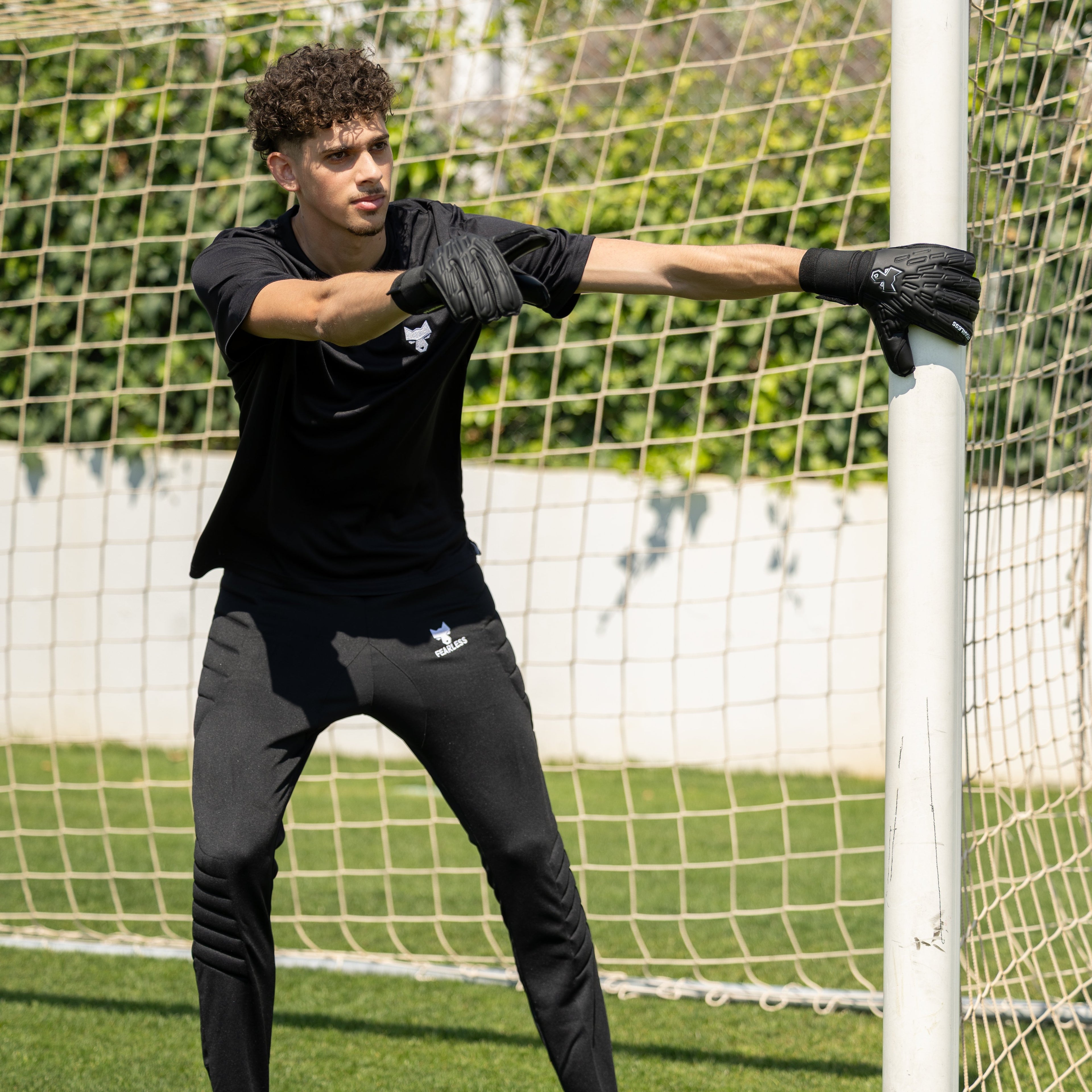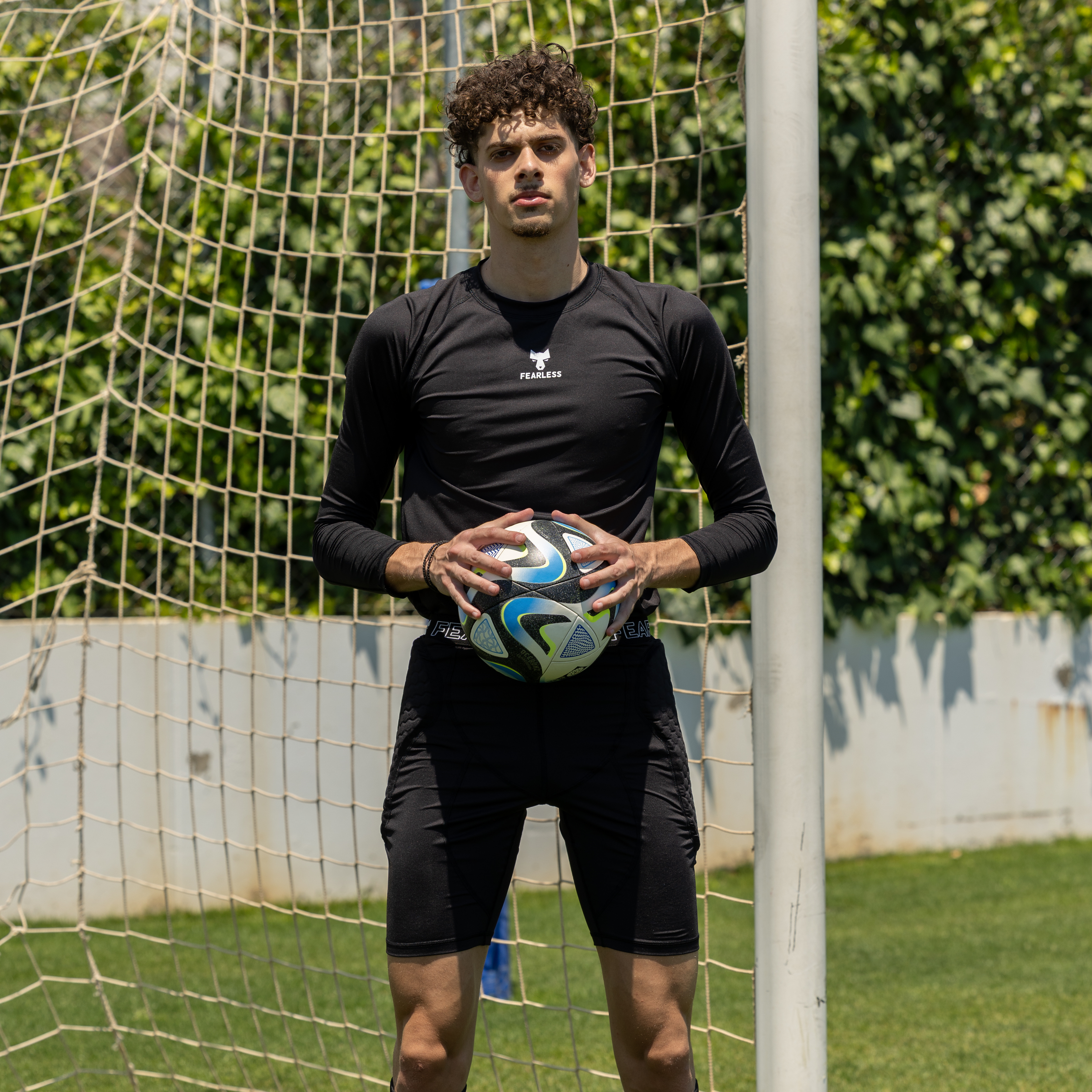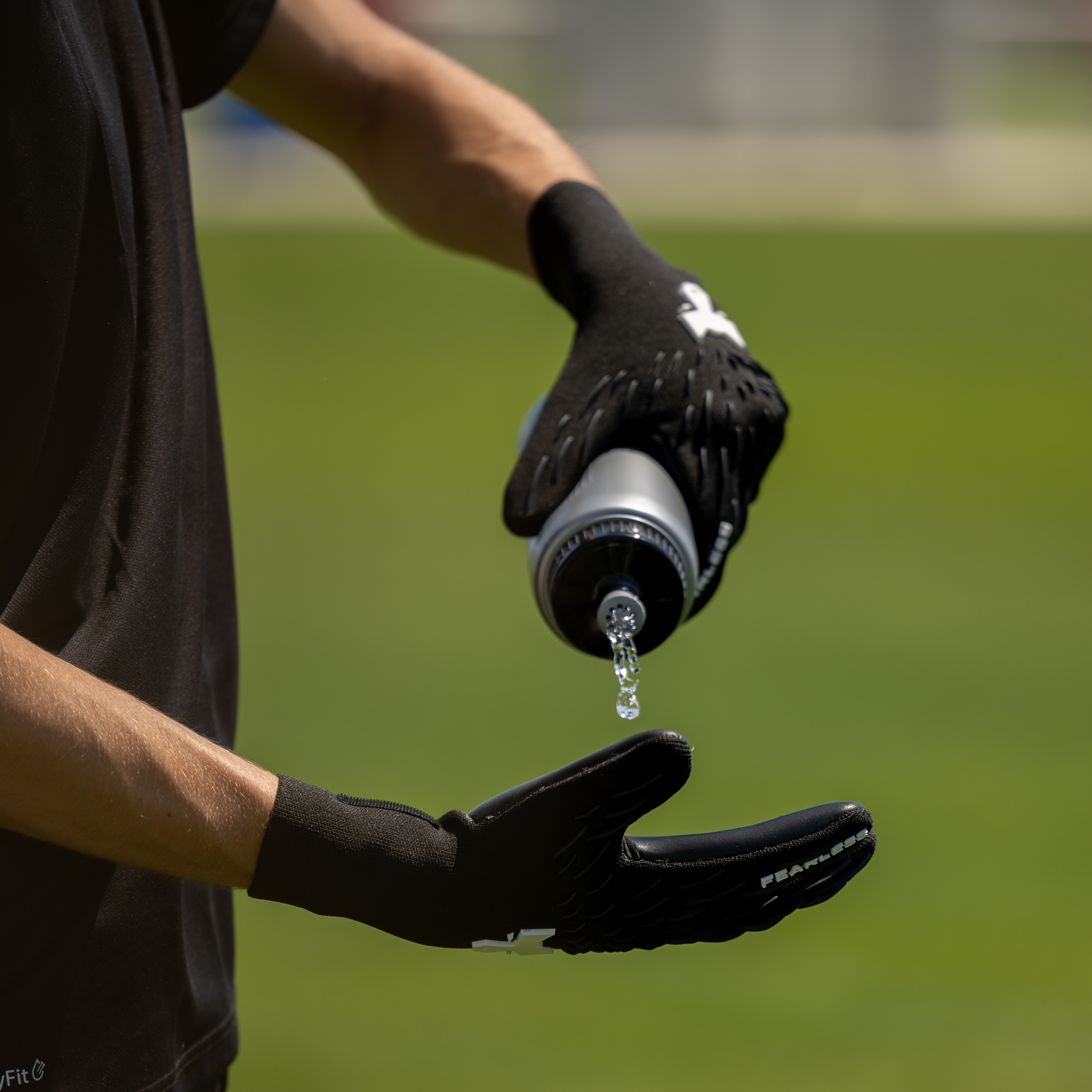How to choose my gloves?
Many times, as goalkeepers, we try to choose gloves and see various symbols or features but don’t know what each one means or which suits us best. That’s why we’ve created a step-by-step guide on how to choose the right gloves!
+ Where will you be playing?
If the pitch is natural or synthetic but in good condition, you can choose a pair with ELITEGRIP+, since the friction during falls will be much lower. Conversely, if the pitch is in poor condition, it’s better to wear a pair designed for greater durability-always with the option to combine them with glove glue!
+ Is it for practice or a match?
Although every practice feels like a match, in an actual game we want to get 100% performance from our gloves. That’s why we recommend having one pair for matches and one for practice. Once your match pair wears out (depending on the number of matches, your age, the fields, etc.), it becomes your “practice pair,” and so on.
+ Under what conditions do you need them?
The weather conditions you’ll be playing in are always important when choosing your gloves. Gloves always indicate which weather conditions they’re designed for, so you can get the highest quality in ball contacts!
+ What level are you playing at?
In general, gloves are a consumable item. At younger ages, one pair remains reliable if used 3–4 times per week for about 2–4 months. This depends on usage, the playing surface, how well you care for them, and the goalkeeper’s technique (as they grow, they stop lifting their palms off the ground). That’s why at a young age it’s recommended to choose more affordable pairs to allow for frequent replacements. Later on, you can start choosing gloves designed for maximum quality in ball contacts.
+ Have you chosen the right size?
To see the dimensions of all our products, click the size chart indicator on the page of the product you’re interested in!
+ Do you want finger protection?
Finger protection is a piece of plastic that fits on the back of the fingers, providing extra protection for the goalkeeper and preventing injuries. It’s commonly used up to around age 14, when goalkeepers are still learning basic ball-handling techniques, or whenever there’s particular sensitivity. You can always remove them whenever you wish.
+ What cut should your gloves be?
The cut (roll finger, negative cut, flat palm, hybrid) refers to the stitching method, mainly in the finger area, and affects how the gloves fit and how you contact the ball. It’s a personal choice which feels best; most goalkeepers try all types over the years.
+ How thick should the palm be?
The thickness of the palm is measured in millimeters and is a basic indicator of glove quality. It usually ranges between 3 and 4 mm. However, thickness does not directly affect durability.
+ Will you choose customization?
Customization or printing is an addition of your choice, allowing the product to display whatever you want-like a name, number, or anything else you can imagine! All you need to do is add it in the appropriate field, choose your desired color, and soon you’ll have in your hands a unique pair just as you dreamed!




